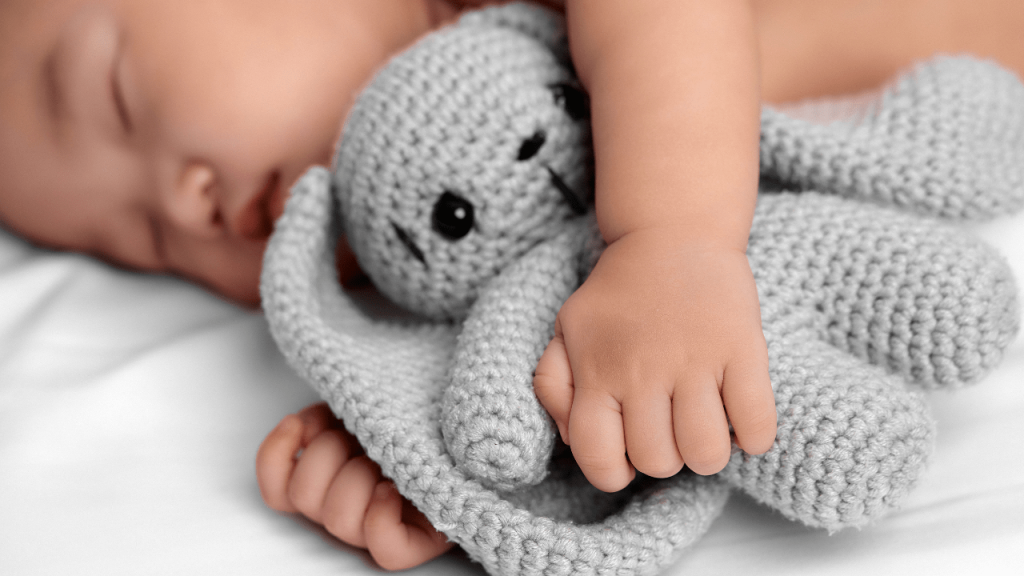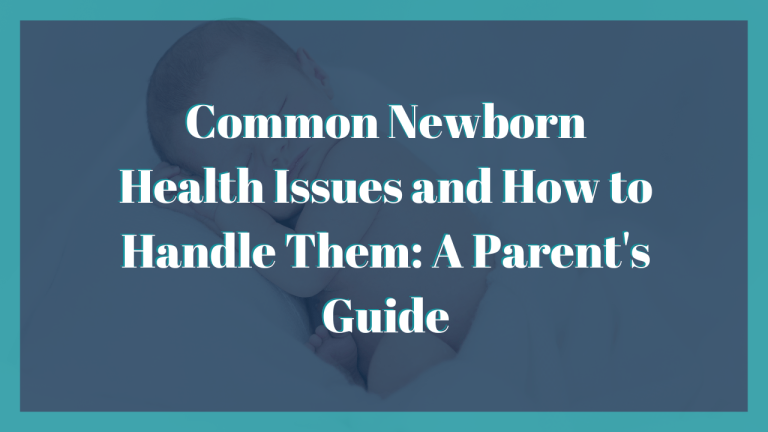Self-Soothing for Infants: A Comprehensive Guide for 2024
Helping your baby learn to self-soothe can feel like a monumental task, but it’s one of the most rewarding skills they can develop! Imagine a peaceful night when your little one drifts off to sleep without needing constant attention. That’s the power of self-soothing. According to recent studies, babies who learn to self-soothe tend to sleep longer and have better overall sleep patterns. In this guide, we’ll dive deep into the world of self-soothing for infants, explore why it’s essential, and provide you with practical tips to help your baby (and you) get more restful nights.
What Is Self-Soothing and Why Is It Important?

Self-soothing is the ability of infants to calm themselves without external help, a crucial skill that promotes healthy sleep patterns and emotional regulation. Typically developing around 4 to 6 months, self-soothing allows babies to fall asleep independently and manage their emotions better.
This skill benefits both babies and parents. Babies who can self-soothe sleep longer and experience fewer nighttime awakenings, which reduces parental stress and sleep deprivation. It also supports long-term sleep health, helping prevent sleep regression and fostering a sense of security.
For parents, creating a consistent bedtime routine and a calm sleep environment can significantly aid in developing this skill. Overall, self-soothing is essential for a child’s growth, laying the foundation for better sleep and emotional well-being.
Common Myths About Self-Soothing

When it comes to self-soothing for infants, there’s no shortage of misconceptions. Many parents are understandably cautious about sleep training and helping their baby learn to self-soothe, often due to misinformation. Let’s debunk some of the most common myths and set the record straight.
Myth 1: Self-Soothing Means Letting Your Baby Cry It Out
Self-soothing isn’t about abandoning your baby to cry. Instead, it’s about helping them gradually develop the skills to calm themselves, often with your support and reassurance.
Myth 2: Self-Soothing Will Harm the Parent-Child Bond
Contrary to popular belief, teaching your baby to self-soothe can actually strengthen your bond. By providing consistent comfort and support, you build trust while encouraging independence.
Myth 3: Self-Soothing Is Only for Older Babies
Self-soothing isn’t just for older babies. Even younger infants can benefit from a soothing sleep environment and the introduction of comfort objects, laying the groundwork for this skill early on.
Myth 4: All Babies Should Self-Soothe in the Same Way
Every baby is different, and what works for one may not work for another. Flexibility and responsiveness to your baby’s unique needs are key to helping them self-soothe.
Myth 5: Self-Soothing Is an All-or-Nothing Process
Self-soothing is a gradual process that may include setbacks like sleep regression. Patience and consistency are essential as your baby learns to soothe themselves over time.
When Do Babies Typically Learn to Self-Soothe?

Most babies begin to develop the ability to self-soothe between 4 to 6 months of age. During this time, their sleep cycles become more established, allowing them to sleep for longer periods without waking. While this age range is typical, it’s important to recognize that each baby is unique—some may start self-soothing earlier, while others might need more time.
Key signs that your baby is ready to self-soothe include the development of sleep associations and the use of transitional objects like a favorite blanket or pacifier. Babies who start to show more consistent sleep patterns, such as longer naps and fewer night wakings, are also likely ready to begin self-soothing. Establishing a predictable bedtime routine can further encourage this process by signaling to your baby that it’s time to wind down and sleep.
Several factors influence when a baby learns to self-soothe. A baby’s temperament plays a significant role, with some babies naturally more inclined to self-soothe, while others may require more time and support. The sleep environment is also crucial—creating a calm, quiet, and secure space helps your baby feel safe enough to self-soothe. Parents who are consistent in their approach and maintain a soothing bedtime routine typically see their babies develop this skill more smoothly.
Developmental milestones, such as the 4-month sleep regression, can impact your baby’s ability to self-soothe. While this phase may bring challenges, it also presents an opportunity to reinforce self-soothing techniques. As babies grow and gain more physical control—like the ability to roll over and find comfortable sleeping positions—they often become better at self-soothing.
If you’re concerned about your baby’s sleep habits or their ability to self-soothe, consulting a pediatrician can be helpful. A pediatrician can offer tailored advice based on your baby’s needs and address any underlying issues, such as sleep disorders. Remember, learning to self-soothe is a gradual process, and with patience and support, your baby will develop this essential skill over time.
Techniques to Encourage Self-Soothing in Infants

Encouraging your baby to self-soothe begins with establishing a consistent bedtime routine. A predictable sequence of calming activities, such as a warm bath, reading a story, or playing soft music, signals to your baby that it’s time to wind down. Over time, this routine helps your baby associate these cues with sleep, making it easier for them to settle independently when they wake during the night.
Creating a sleep-friendly environment is also crucial. Ensure that the nursery is quiet, dimly lit, and free from distractions. Introducing a comfort object like a soft blanket or stuffed animal can provide your baby with a sense of security, helping them feel more comfortable falling asleep on their own. Consistency in the sleep environment can reinforce the cues that it’s time to rest, making self-soothing a more natural process.
The gradual withdrawal method is another gentle approach to teaching self-soothing. This technique involves slowly reducing your presence as your baby falls asleep, moving from sitting next to the crib to eventually leaving the room. This method allows your baby to develop self-soothing skills while still feeling supported. By practicing responsive settling—giving your baby a few minutes to try to calm down before intervening—you encourage them to find ways to soothe themselves.
During the day, building your baby’s sense of security through regular comforting interactions is important. Activities like cuddling, talking, and playing help your baby feel more confident and relaxed. This daytime comfort can translate into better self-soothing at night, as a secure baby is more likely to feel safe enough to settle on their own.
Finally, practicing gentle sleep training methods can support the development of independent sleep habits. Techniques like the Ferber method or the pick-up/put-down method can help your baby learn to self-soothe while still feeling reassured by your presence. The goal is to gradually reduce their reliance on being held or rocked to sleep, allowing them to become more independent in their sleep patterns.
Common Challenges in Teaching Self-Soothing

Teaching a baby to self-soothe can be daunting, with many parents facing difficulties as they navigate this important developmental milestone. One of the primary challenges is helping babies adjust to new sleep patterns. As babies grow, their sleep cycles change, often leading to disruptions like sleep regressions, particularly around 4 months. During these phases, babies may wake more frequently and struggle to settle themselves back to sleep, making it difficult to maintain progress in self-soothing.
Another significant challenge is maintaining a consistent sleep environment. Babies thrive on routine, and any inconsistencies in their surroundings—such as varying levels of light, noise, or temperature—can disrupt their ability to self-soothe. Additionally, frequent changes in sleep location can confuse your baby and hinder the development of strong self-soothing habits. Ensuring that your baby’s sleep environment is calm, quiet, and predictable is key to supporting their ability to self-soothe.
Parental anxiety and inconsistency often compound the difficulty of teaching self-soothing. It’s natural for parents to feel anxious when their baby cries, but reacting too quickly or inconsistently can undermine the process. Babies need time and opportunity to learn to soothe themselves, and inconsistency in parental responses can create confusion. Striking a balance between being responsive and giving your baby space to practice self-soothing is crucial, but it requires patience and a commitment to consistency.
Sleep regressions and developmental milestones can also pose significant hurdles. During rapid growth or new skills, such as crawling or walking, babies may experience disrupted sleep, making self-soothing more challenging. While these phases can be frustrating, they are typically temporary. Maintaining a steady sleep routine during these times can help your baby regain their self-soothing abilities once the regression passes.
Finally, some babies may resist self-soothing techniques altogether, particularly if they are used to being soothed by a parent. Babies with strong attachments to specific sleep associations, like being rocked or nursed to sleep, may struggle to transition to independent sleep. Understanding that each baby has a unique temperament can help parents tailor their approach to meet their baby’s needs, making the process smoother and less stressful. Patience, persistence, and gradual transitions are key to overcoming these challenges and helping your baby learn to self-soothe.
Tips for Parents: How to Support Your Baby’s Self-Soothing Journey

Supporting your baby’s self-soothing journey begins with establishing a consistent bedtime routine. A predictable sequence of calming activities, like a warm bath or a bedtime story, helps signal to your baby that it’s time for sleep. Repeating this routine nightly creates a comforting sense of security, making it easier for your baby to settle down and eventually learn to self-soothe. This consistency is key to helping your baby feel more confident in their ability to fall asleep independently.
Gradually reducing your baby’s reliance on sleep associations—such as being rocked or nursed to sleep—is another crucial step. Instead of immediately picking up your baby when they cry, try placing them in their crib while still awake but drowsy. This gradual withdrawal encourages your baby to learn to fall asleep without needing external help, fostering the development of self-soothing skills over time.
Daytime bonding plays a significant role in your baby’s nighttime comfort. Engaging in regular, comforting interactions throughout the day—like cuddling, talking, and playing—builds a strong emotional foundation. This sense of security during the day helps your baby feel safe enough to explore self-soothing at night. Additionally, introducing a comfort object such as a soft blanket or stuffed animal can offer extra reassurance, helping your baby to feel more at ease and self-sufficient during the night.
Responding to nighttime cries with patience and consistency is essential. Giving your baby a few moments to try self-soothing before intervening, and then offering gentle reassurance without immediately picking them up, reinforces their ability to calm themselves. Adapting your approach to your baby’s temperament—whether they need more time or reassurance—can make the process smoother. Lastly, remember that setbacks are normal. Staying consistent, even during challenging periods like sleep regressions, will help your baby continue to develop their self-soothing skills.
If you’re feeling uncertain or overwhelmed, seeking support from a pediatrician or sleep consultant can provide valuable guidance. These professionals can offer personalized advice to help you navigate any difficulties, ensuring that you and your baby are on the right path toward successful self-soothing.
Conclusion
Teaching your baby to self-soothe is a journey filled with ups and downs, but it’s an essential step in helping them develop healthy sleep habits. Remember, every baby is different, so what works for one might not work for another. Stay patient, and consistent, and most importantly, trust your instincts. As you embark on this journey, you’ll not only help your baby sleep better but also enjoy some well-deserved rest yourself. Ready to get started? Your baby’s peaceful nights are just around the corner!







